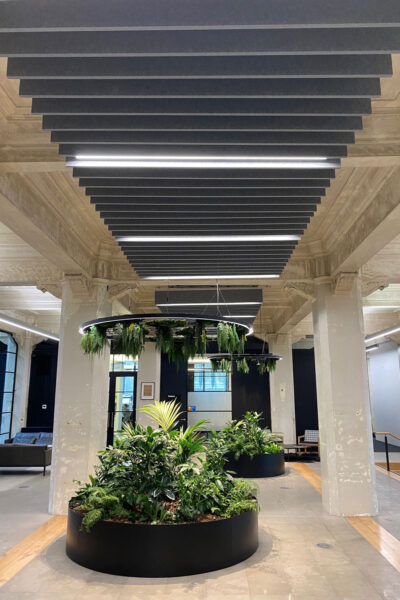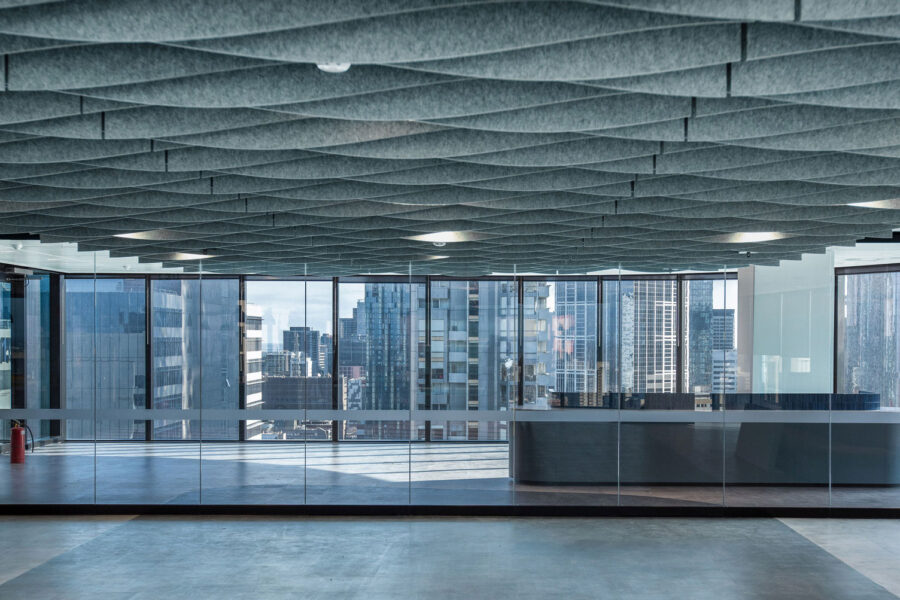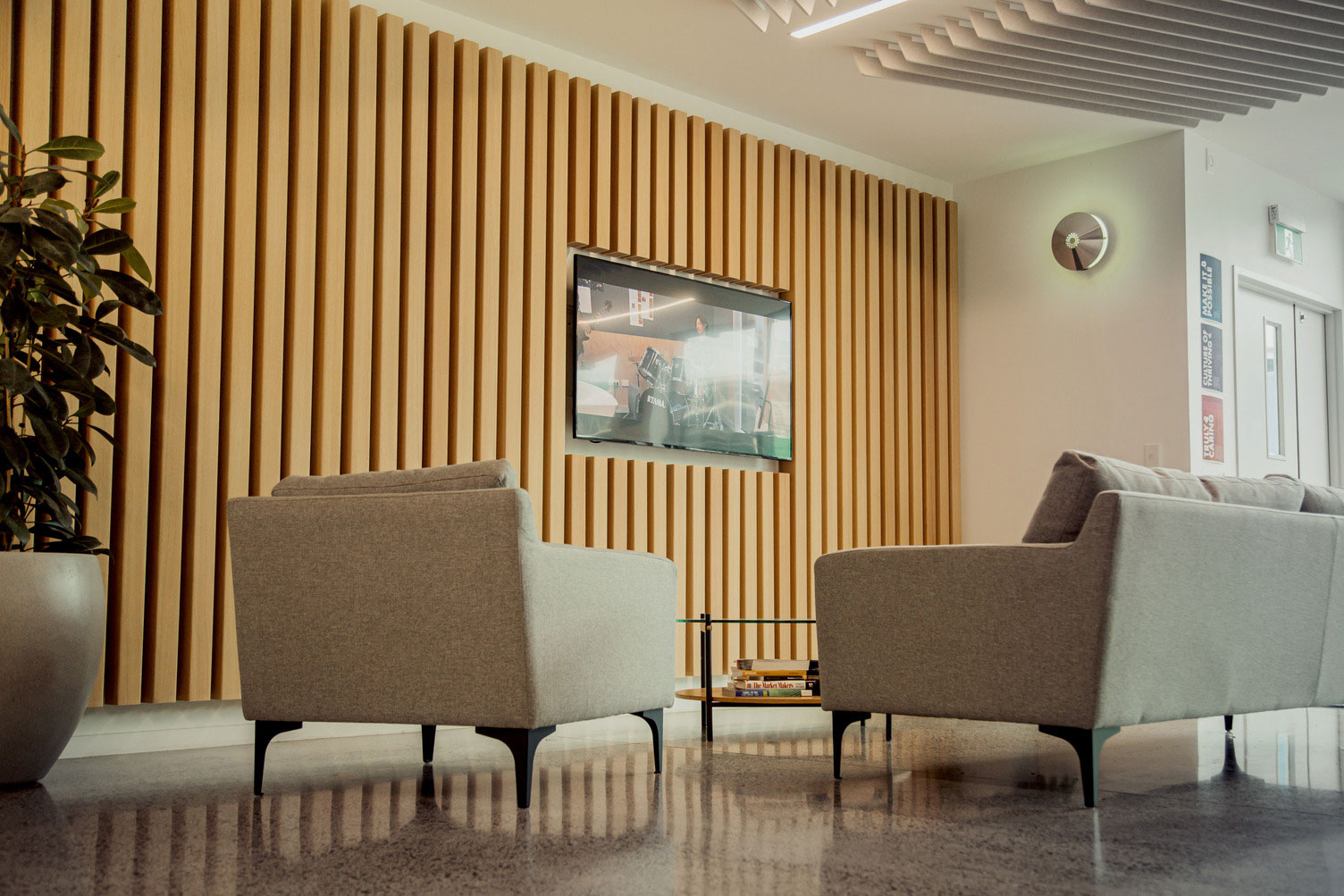Story at a glance:
- Autex Acoustics manufactures aesthetic sound treatment products that limit echo and reverberation in interior spaces.
- Acoustic solutions help to create healthier workplaces that enhance well-being.
- Products like these are also developed with sustainability in mind.
Since 1967 Autex Acoustics has transitioned from specializing in textile and carpet production to becoming a company that revolutionizes interior spaces with cutting-edge acoustic solutions.
A pioneer in the evolution and production of non-woven architectural textiles as well as eco-friendly polyester insulation, the company provides a cultivated spectrum of products to the building industry with sustainability in mind.
Autex Acoustics started in New Zealand but has expanded to serve more than 18 markets, plus manufacturing and finishing networks in Australia, the UK, and the US. “We created a bit of a wave in the market and started to innovate these new products,” says Aidan Hill, global technical and sustainability manager for Autex Acoustics. “Since then other companies have joined Autex in that space, but we’re continually innovating and evolving within the acoustic space.”
What Acoustic Solutions Do

Photo courtesy of Autex Acoustics
Designed to limit and manage reverberation and echo in buildings interiors, Autex Acoustics cultivates comfortable, acoustically balanced spaces. The company offers a range of products—including wallcoverings, panels, baffles, and screens¬—all of which can be easily customized to fit the needs of any space.
These acoustic absorbers combat disruptive sounds like chatter and everyday noises that are often amplified by hard surfaces. Autex Acoustics is well-suited for environments like a busy cafe, for example. “What we’re trying to do is soften the space so you end up reducing that reverberation, that echo, and making it a more comfortable auditory experience,” Hill says.
Autex’s three-dimensional Ceiling Tiles provide an option outside of composite ceiling tiles, while their Acoustics Timber solution combines beauty with acoustics—realistically imitating timber and acting as a high-quality acoustic treatment that can be applied to panels, baffles, or ceiling tiles. Autex’s Composition velour acoustic wall covering is durable and applied like wallpaper—and it maintains its smooth finish over time.
For a subtle accent and acoustic solution, the Autex Cascade screen hangs from the ceiling to offer yet another innovative choice. “Our products have that acoustic benefit as well as having a really nice aesthetic,” Hill says.
Noise, Health, and Productivity

Photo courtesy of Autex Acoustics
Acoustic solutions matter greatly because noise reduction is an important element for overall well-being. It’s been proven time and again that unwanted or disturbing noise can negatively impact people in a space. Autex cites Nick Perham, a New Zealand professor of psychology, who said sound impacts how people recall information, perform basic arithmetic, and even think.
Research also shows that even quiet conversations can stunt productivity in bustling open-plan spaces. Disruptive auditory stimuli over a long period of time can cause health issues like tiredness, pain, and high blood pressure, too.
The right acoustic treatment can create the privacy some people need to feel in control of their space or workday. Proper acoustics can boost performance and morale, too. Autex’s Quietspace panel is a high-performing product that absorbs a minimum of 85% of sound energy. The Autex Cube panels are a lightweight solution that absorb extra reverberation. Additionally, the Autex Vicinity system offers acoustic desk screens to give more visual and acoustic privacy in open-plan environments.
In a world where more people work from home than ever before, it’s crucial for modern workplaces to have acoustically treated spaces that make video calls or collaborating with coworkers online easier. Along with the Autex Composition wallcovering, the Autex Sordino acoustic wallcovering absorbs noise at high frequencies, where human voices sit.
Open-plan spaces, meeting rooms, breakout spaces, and rooms with hard surfaces—like glass, marble, and concrete—need acoustic treatment most, Hill says, and it’s important to consider a room’s purpose when analyzing the sound control of a space.
Testing the Sound Absorbers

Photo courtesy of Autex Acoustics
Autex tests the effectiveness of its products at a large commercial lab. Sample products are placed in a test chamber—a reverberation room where all the sound reflects perfectly—that represents how the product would be installed in the real world. Then a sound source pumps out sound and hits every frequency on the spectrum.
Before the sample is placed in the room, the sound impact is measured. The sound is measured again with the product in the room. Testers calculate the difference between the amount of noise picked up by the microphone before and after the product was placed in the room. “That’s how much sound your product has absorbed,” Hill says.
Sustainable R&D
All of the materials Autex Acoustics chooses also undergo a sustainability screening process. As part of that process the company looks at every level of ingredient—down to 100 parts per million, Hill says. That includes the pigments within the fiber and the chemicals within that to ensure they aren’t toxic to people.
Biophilic design is also part of the Autex mission, Hill says, as they aim to design products that bring the feel of nature inside to make spaces more pleasant. The company follows the WELL Building scheme to inform many of its designs.
To test the products and measure their environmental impact, they perform a life cycle assessment. Expert consultants from the field observe the product and review how it was sourced and extracted from its raw material of origin. Carbon emissions are of utmost importance. “Using that information we have offset all of our product’s emissions so our products are also carbon-neutral,” Hill says.
The company’s procurement and design teams work together on new products to ensure materials are locally sourced and as low-impact as possible. From there the design team focuses on aesthetics and functionality with a heavy emphasis on the carbon impact. Currently Autex is working to develop tools and processes to continue recycling its waste products and establish zero-waste production lines.

